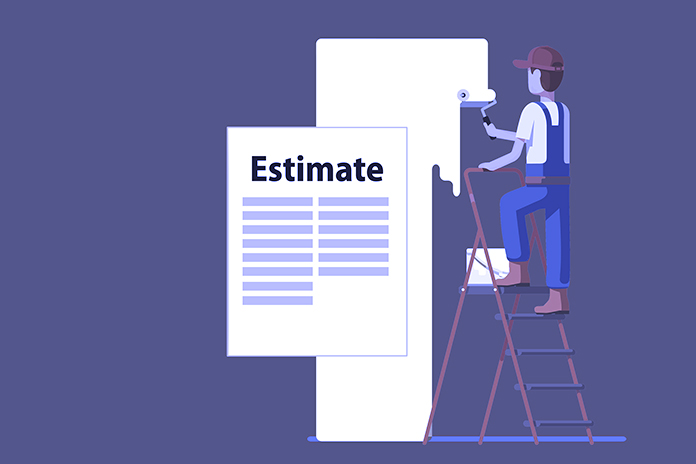Introduction:
Estimating the cost of a painting project is an intricate art form that demands a keen eye for detail, a deep understanding of materials and labor, and the ability to anticipate potential challenges. Whether you’re a seasoned contractor, a budding entrepreneur, or a homeowner embarking on a DIY project, mastering the art of painting estimating is essential for achieving both quality results and financial success. In this comprehensive guide, we’ll delve into the nuances of painting estimating, providing invaluable insights and practical tips for accurate and efficient cost assessment.
Understanding the Scope:
The first step in painting estimating is gaining a clear understanding of the project’s scope. This involves assessing the size of the area to be painted, the type and condition of the surfaces, and any additional prep work required, such as sanding, priming, or repair of damaged areas. By meticulously examining these factors, you can create a detailed blueprint that serves as the foundation for your estimate.
Materials and Supplies:
Selecting the right materials and supplies is crucial for achieving a professional finish and staying within budget. Consider the type of paint needed for the project, taking into account factors such as durability, sheen, and color selection. Additionally, factor in the quantity of paint required based on the surface area to be covered and any specific product recommendations from manufacturers.
In addition to paint, don’t forget to account for other essential supplies such as brushes, rollers, masking tape, drop cloths, and cleaning solvents. These items may seem insignificant, but their quality can significantly impact the overall outcome of the project.
Labor Costs:
Estimating labor costs accurately is often the most challenging aspect of painting estimating. Labor expenses can vary widely depending on factors such as the skill level of the painters, the complexity of the project, and regional labor rates. To generate an accurate labor estimate, consider the following:
- Painter’s Hourly Rate: Determine the hourly rate for painters based on their experience level and prevailing market rates in your area. Keep in mind that skilled painters may command higher wages but can also complete the job more efficiently, potentially reducing overall labor costs.
- Time Required: Break down the project into individual tasks and estimate the time required for each, taking into account factors such as surface preparation, application of multiple coats, drying time, and cleanup. Be realistic in your time estimates to avoid overcommitting or underestimating labor expenses.
- Crew Size: Consider the number of painters needed to complete the project within the desired timeframe. While a larger crew may increase upfront labor costs, it can also expedite the painting process and minimize disruption to the property owner.
Overhead and Profit Margin:
In addition to direct costs such as materials and labor, painting estimating should also factor in overhead expenses and profit margin. Overhead costs encompass fixed expenses such as equipment maintenance, insurance, licensing fees, and administrative overhead. While these costs may not be directly tied to a specific project, they are essential for sustaining your painting business in the long run.
Profit margin is the amount of revenue you aim to generate above and beyond your total expenses. It serves as a buffer against unforeseen expenses, fluctuations in material costs, and economic downturns. When determining your profit margin, consider industry standards, market demand, and your company’s unique value proposition.
Contingency Planning:
No matter how meticulous your planning, painting projects are inherently prone to unforeseen challenges and expenses. That’s why it’s crucial to build a contingency fund into your estimate to account for unexpected contingencies such as weather delays, unforeseen repairs, or changes in scope. A common rule of thumb is to allocate 10-20% of the total project cost as a contingency reserve, depending on the project’s complexity and risk factors.
Communication and Transparency:
Effective communication is the cornerstone of successful painting estimating. Be transparent with your clients about the factors influencing the cost estimate, including materials selection, labor rates, and potential contingencies. Educate them about the value of investing in quality materials and skilled labor, and address any concerns or questions they may have promptly.
Conclusion:
Mastering the art of painting estimating requires a combination of technical expertise, attention to detail, and effective communication. By understanding the scope of the project, selecting the right materials and supplies, accurately estimating labor costs, factoring in overhead and profit margin, planning for contingencies, and fostering transparent communication with clients, you can generate accurate estimates that satisfy both your clients and your bottom line. With practice and experience, painting estimating can become not just a necessary chore, but a strategic tool for growing your painting business and delivering exceptional results.
Also Read: Expand Your Network On LinkedIn: Our Ten Tips To Adopt


